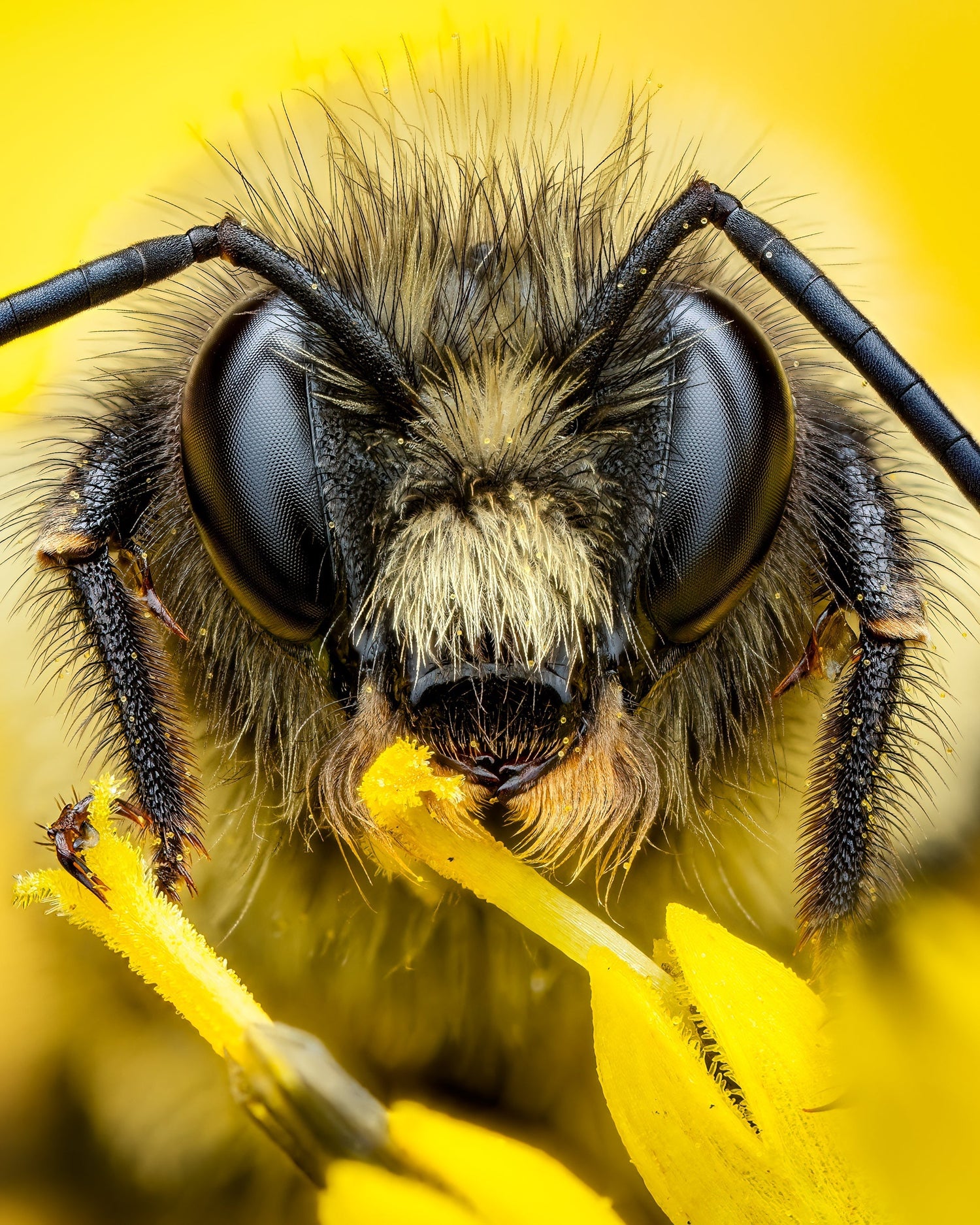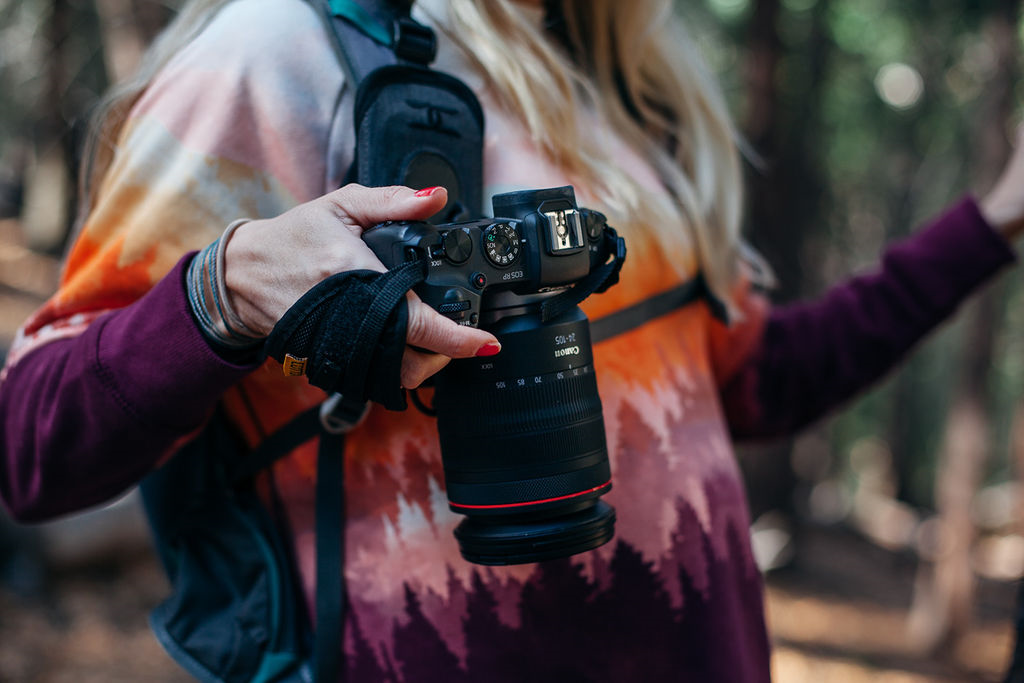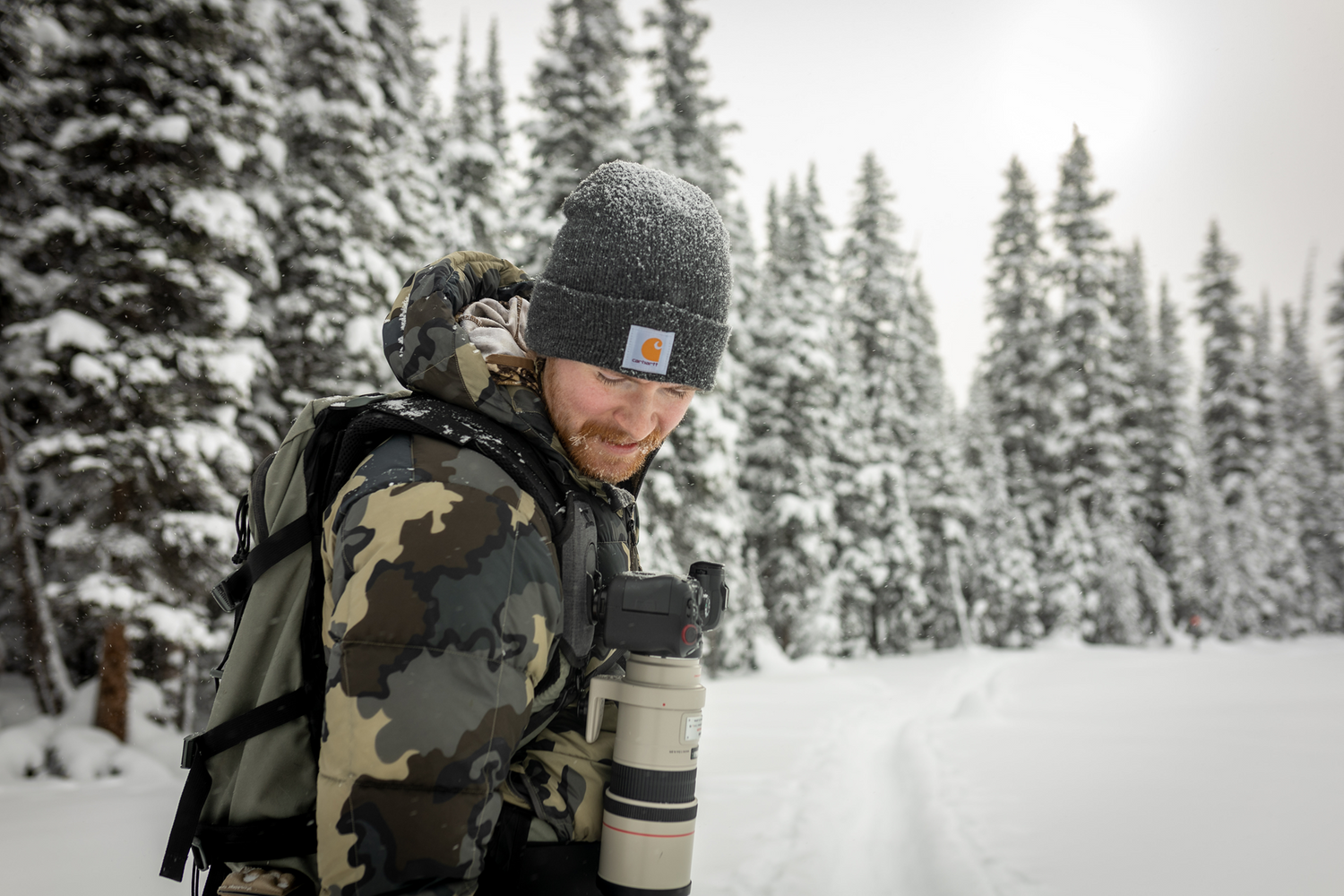This self-taught photographer’s style reveals his deep understanding and appreciation of nature. With a degree in Organismal Biology & Zoology, Chase Dekker’s passion and knowledge of the natural world shines through his imagery.
Here is our latest installment of Cotton's "Interview with a Photographer":
Cotton Carrier: Where do you call home?
Chase Dekker: Monterey, California. I was originally born here and after living in both Washington state and Wyoming I can say I am happy to be back.
CC: How long have you taken photographs for unprofessionally and professionally?
I almost exclusively shoot wildlife and landscapes, so people have called my work both adventurous and imaginative. I can’t say that I really have a style this early on as I am still always looking for different types of photographs, whether it is fine art black and whites, or multiple landscapes photos that have to be blended together to make one scene.
CC: Have you ever gone to photography school?
CD: I actually got my college degree in Organismal Biology & Zoology as I thought it would be a better background to have, since I knew I would be tracking animals all across the globe. I am almost entirely self taught from practicing with my camera for years, using it in the field to see what works and what doesn’t, and also from reading many books and watching hours of YouTube videos.
CC: Where is your favorite place or thing to shoot?
CD: I get asked questions like this all the time and I would probably have to say the Inside Passage between British Columbia and southeast Alaska. I love the serenity and ethereal mood you find in this remote area and I find myself wanting to visit there more than any other location. Whether it’s the bears, wolves, or whales, I can never get enough. Not to mention I like the challenge of shooting here since you cannot drive to it like many more accessible locations. I also love to shoot in Wyoming (when the crowds are absent), Africa, and right here in my home of Monterey.

CD: I mostly use my trusty Canon 5D Mark III & IV, but will hopefully be obtaining and smaller mirrorless camera for those landscape only trips. When I shoot wildlife, I prefer to use the Canon EF 300mm f/2.8L IS II lens as it is lighter than many other larger lenses and it is incredibly fast and sharp. I also use a variety of other lenses from the Canon 70-300mm L-series lens to the Tamron 24-70mm f/2.8 lens.
CC: What’s the craziest thing you’ve ever done to get “The Shot”?
CD: There have been a lot of moments that I’ve looked back on and have wondered if I would ever put myself in that situation again, but there’s one situation that has always stood out to me. We were camping on the coast of Katmai National Park & Preserve photographing brown bears and the winds were extremely fierce. They howled over 80mph for 3 days straight leaving us marooned there since the float plane from Kodiak Island couldn’t pick us up. On one of the days where we were stuck, I was the only member of our small group that wanted to head out and photograph the bears instead of resting. Walking straight into the wind, it took me nearly 30 minutes to walk ½ mile as I kept slipping in the mud. I eventually got to the creek where a bear was fishing and I laid down on the gravel to avoid the wind and get a low angle. After a few minutes of watching the bear fish, he galloped my way which really caught me off guard. I knew bear spray wouldn’t work since the wind was too strong, so I had to quickly stand up and wave my arms to make myself appear larger. He came within 5 feet, stopped for only a moment, then proceeded to walk back to the creek. I felt my heart pounding as I knew how easily south that situation could’ve turned. I love bears, but sometimes photographing animals that can’t eat you is a little more relaxing.
CC: Who has inspired you as a photographer?
CD: I’ve had a lot of inspiration over the years from photographers such as Art Wolfe, Frans Lanting, Bob Talbot, Tom Mangelsen, Flip Nicklin, and many more. I always appreciate the work of others who have put in the time and effort to capture incredible images because I know how hard it can be to put yourself out in the elements to photograph what you’ve imagined in your head for so long. All of those photographers and many others like them have created stories with just their photos, which helps promote conservation efforts so those places and animals can be there for generations.

CD: I always tell clients or students I have to photograph what they love. If you don’t have any passion or excitement for your subject, it will show. I also think it is very important to break away from the norm as much as possible. More photos are taken in a single day than ever before, so it is becoming almost a necessity to capture subjects in a different light and perspective.
CC: Can you share a photographic resource you personally use?
CD: One of my favorite photographic resources is a website called www.dxomark.com. They have incredible information about camera bodies and lenses that I use when making a purchase. I really do not keep up with camera technology news as much as others, but this website is a goldmine.
CC: How has photography shaped your day to day?
CD: Photography has really enabled me to leave the house whenever I wish and go find something to shoot without feeling like I am wasting time. For many people what I do is something they only get to do on the weekends or on vacations. I love being able to live most days like an adventure as I always remind myself how short our time on this planet is and how we need to make the most of it. There are however many days spent in front of the computer editing hundreds of images, but that’s what rainy days are made for.
CC: Where has photography taken you, and made you experience?
CD: Photography has taken me all over the globe from the high arctic to the mountainous rainforests of Africa. I always look forward to traveling to new locations to photograph new species and landscapes that I have only seen in movies or images before.

CD: I have a lot of exciting trips and workshops planned this year that I can’t wait to get to. I will be visiting Alaska soon to photograph the northern lights and this summer will be a big journey to Fiji and Tonga to begin my underwater photography ventures as I photograph coral reefs, sharks, and humpback whales. I’ll also be traveling to Canada, the San Juan Islands, New England, the Rockies, and more. I also have workshops in Grand Teton National Park, Yosemite, Big Sur, and more, which are always a lot of fun!
CC: Anything else you’d like to add?
CD: Nope, I think I spilled out enough info for one afternoon!
Check out Chase's work @
Website: www.chasedekker.com
Instagram: @chasedekkerphotography
Facebook: www.facebook.com/chasedekkerimages




